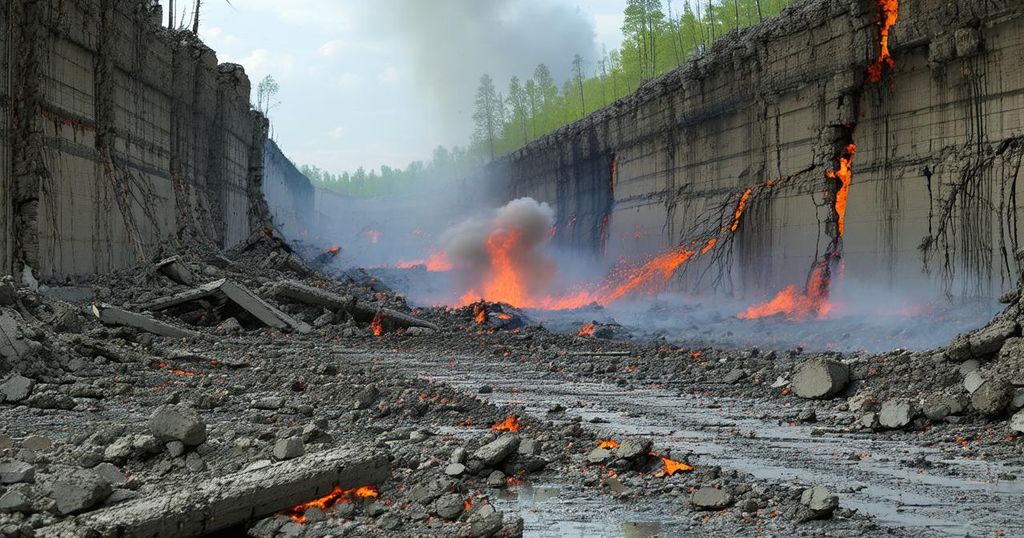The Most Powerful Earthquakes in History: An Overview
This article discusses the five strongest earthquakes ever recorded, focusing on their magnitudes and impacts. These include the Valdivia Earthquake (9.5), the Great Alaska Earthquake (9.2), the 2004 Sumatra-Andaman Earthquake (9.1), the 2011 Tohoku Earthquake (9.1), and the Kamchatka Earthquake (9.0). Each earthquake had significant consequences for human life and prompted changes in global disaster preparedness.
Throughout history, several monumental earthquakes have been recorded, showcasing the earth’s immense power and the dire consequences these natural phenomena can bring. Among these seismic events, the Valdivia Earthquake of 1960 stands as the most significant, boasting a record-breaking magnitude of 9.5. Occurring on May 22, this devastating earthquake originated in the Bio-Bio region of Chile and was characterized by intense shaking lasting approximately 10 minutes. Its aftermath included a series of devastating tsunami waves wreaking havoc across the Pacific Ocean. The earthquake resulted in a tragic loss of life, with estimates suggesting around 1,600 fatalities, nearly 3,000 injuries, and approximately 2 million people rendered homeless. The subsequent tsunamis profoundly impacted coastal areas in Hawaii, Japan, and the Philippines, claiming over 200 additional lives. Notably, the Valdivia Earthquake also instigated the eruption of the Cordón Caulle volcano, compounding the calamity experienced in the region. Following this, the Great Alaska Earthquake of 1964, which reached a magnitude of 9.2, struck on March 27. This earthquake, also known as the Good Friday Earthquake, caused extensive destruction in Anchorage and surrounding areas due to severe shaking and land subsidence. The tsunami generated from this earthquake spread along the Pacific coast, yet due to a lower population density in the affected areas, the death toll was recorded at 131. On December 26, 2004, the Sumatra-Andaman Earthquake jolted the Indian Ocean with a magnitude of 9.1, leading to one of the deadliest tsunamis in recorded history. The quake impacted numerous nations including Indonesia, Thailand, Sri Lanka, and India, resulting in a catastrophic death toll exceeding 230,000. The devastation experienced by Sumatra was particularly severe, prompting worldwide efforts to enhance tsunami warning systems and evacuation strategies. Shortly after, on March 11, 2011, Japan experienced the Tohoku Earthquake, which registered a magnitude of 9.1. The prolonged shaking lasting over six minutes triggered a destructive tsunami along the northeastern coast, leading to approximately 18,000 deaths and causing significant damage to infrastructure, including a meltdown at the Fukushima nuclear power plant. The tsunami waves reached as far as the Hawaiian Islands and the western coast of South America, underscoring the global reach of such seismic events. Lastly, the Kamchatka Earthquake occurred on November 4, 1952, measuring 9.0 on the Richter scale. Although this earthquake was one of the strongest recorded, its remote epicenter limited fatalities to an estimated 10,000-15,000 individuals. The tsunami generated by this earthquake notably caused damage to the Aleutian Islands and the Hawaiian Islands with significant financial implications, estimated at $17 million. Noteworthy was the direct impact on the town of Severo-Kurilsk, where surging waves, reaching heights of 50 to 60 feet, obliterated over one-third of its population, who subsequently relocated to higher ground. These historic earthquakes serve as poignant reminders of nature’s formidable power, as they not only reshape geographical landscapes but also reflect the critical need for effective disaster preparedness and rapid response mechanisms.
Understanding the severity and historic significance of major earthquakes is crucial for both historical documentation and contemporary preparedness. Earthquakes are categorized by their magnitudes, which denote their intensity and potential for destruction. The events detailed in this article have shaped not only the immediate environments in which they occurred but have also prompted international discussions on safety protocols, emergency preparedness, and geological research. Each major earthquake has contributed to our understanding of seismic activity, leading to improved early warning systems and building codes designed to mitigate the impact of future events.
In conclusion, the examination of the strongest recorded earthquakes reveals the immense power of geological forces that shape our planet. The Valdivia Earthquake remains the largest on record, followed closely by significant events such as the Great Alaska Earthquake and the Sumatra-Andaman Earthquake. Each of these catastrophes has had profound effects on human life and infrastructure, highlighting the urgent necessity for continued advancements in disaster preparedness and risk reduction strategies to protect against the formidable threats posed by seismic events.
Original Source: science.howstuffworks.com




Post Comment